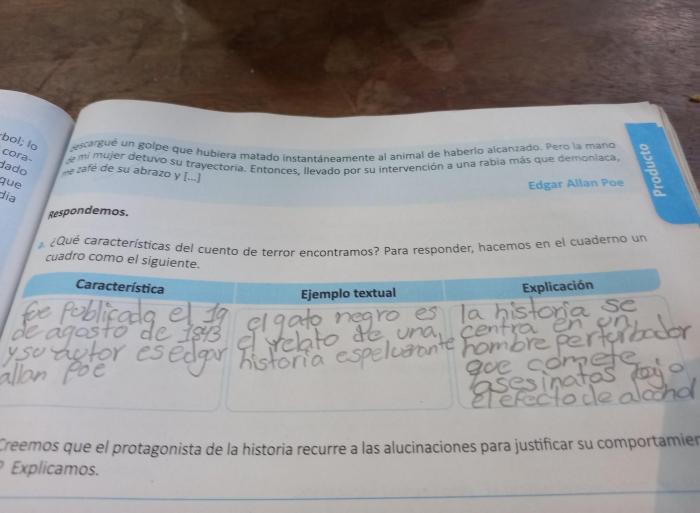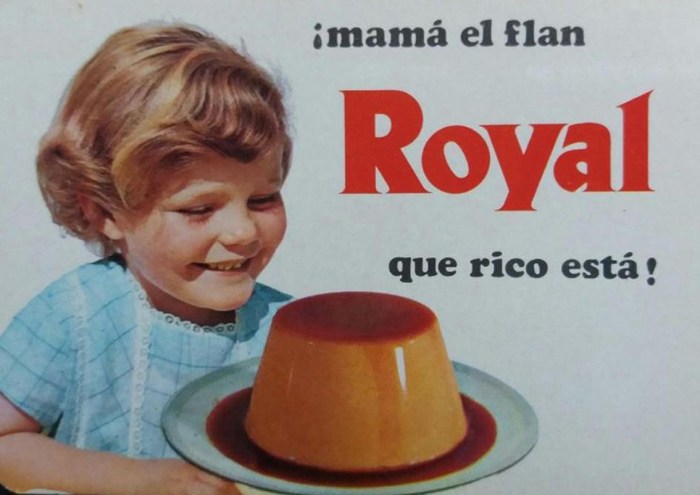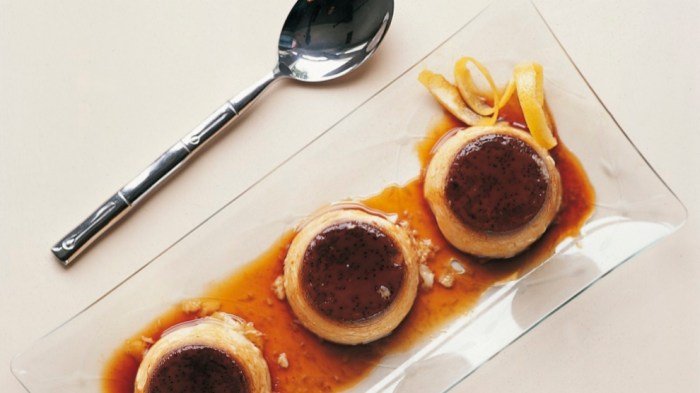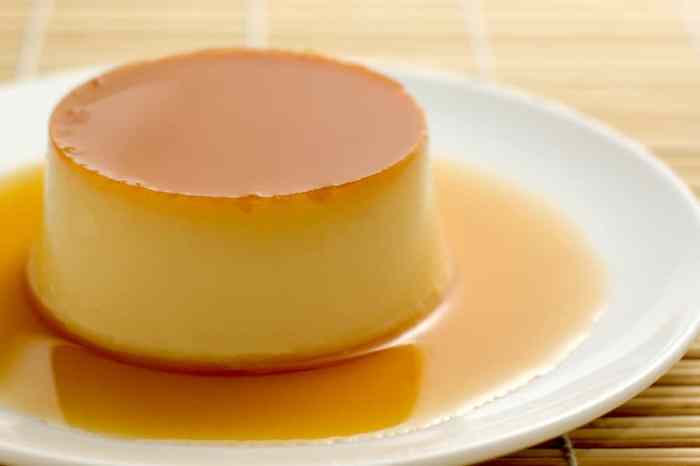In the realm of culinary delights, few desserts hold a more cherished place than flan. And in the heart of every town, village, and region, there lies a unique and cherished variation of this beloved treat. Join us as we embark on a delectable adventure through “en mi pueblo hacemos el flan,” exploring the rich tapestry of flavors, traditions, and cultural significance that make this dessert a symbol of community and shared experiences.
From the sun-kissed shores of coastal villages to the bustling streets of inland towns, the art of flan-making has been passed down through generations, evolving into a vibrant mosaic of regional specialties. Whether it’s the subtle hint of citrus in the south or the bold infusion of spices in the north, each variation tells a story of the local culture and the passionate artisans who have honed their craft over centuries.
Recipe Variations

The recipe for flan varies from region to region in “en mi pueblo hacemos el flan.” This is due to the different ingredients and techniques that are used in each region.
In some regions, flan is made with milk, eggs, and sugar. In other regions, it is made with condensed milk, evaporated milk, and sugar. Some recipes also call for the addition of vanilla extract, cinnamon, or nutmeg.
Regional Variations
- In Mexico, flan is typically made with a combination of milk, eggs, and sugar. It is often flavored with vanilla extract and cinnamon.
- In Spain, flan is typically made with condensed milk and evaporated milk. It is often flavored with vanilla extract and nutmeg.
- In Puerto Rico, flan is typically made with coconut milk. It is often flavored with vanilla extract and cinnamon.
Cultural Significance

Flan holds a deep cultural significance within the context of “en mi pueblo hacemos el flan.” It embodies the essence of community, tradition, and familial bonds.
Flan is deeply ingrained in local traditions. It graces festive tables during celebrations like Christmas, Easter, and weddings, symbolizing joy, abundance, and prosperity. The act of preparing and sharing flan becomes a communal experience, fostering a sense of belonging and shared heritage.
Family Gatherings
Flan is a centerpiece at family gatherings. It evokes fond memories and serves as a catalyst for storytelling and laughter. The aroma of freshly baked flan permeates the air, creating a warm and inviting atmosphere where loved ones reconnect.
The tradition of making flan is often passed down through generations, with each family having its own unique recipe and techniques. The sharing of flan becomes an act of love, nurturing intergenerational bonds and preserving cultural traditions.
Historical Origins: En Mi Pueblo Hacemos El Flan

Flan, a beloved dessert in “en mi pueblo,” traces its roots back to ancient Rome, where it was known as “tyropatina.” Over time, this culinary creation embarked on a culinary journey, finding its way into the kitchens of various cultures and evolving into the delectable treat we know today.
Roman Origins
Tyropatina, the Roman precursor to flan, was a simple dish consisting of milk, eggs, and honey. It was often served as a dessert or as a light snack. Over time, the recipe evolved to include additional ingredients such as flour, sugar, and spices.
Medieval Adaptations
During the Middle Ages, flan made its way into the kitchens of monasteries and convents. The monks and nuns experimented with the recipe, adding their own unique touches. It was during this time that the dish began to take on the form we recognize today, with a custard base and a caramelized sugar topping.
Spanish Influence
When the Spanish conquistadors arrived in the Americas, they brought their culinary traditions with them, including flan. The dish quickly became popular in the New World, and it eventually made its way to the kitchens of “en mi pueblo.” Over time, the local community adapted the recipe to suit their own tastes and preferences, creating the unique and beloved flan that is enjoyed today.
In my town, we make the best flan. If you’re a fan of classic literature and want to test your knowledge, check out the great gatsby final exam . It’s a challenging but rewarding way to review the novel. Afterward, come back and savor the sweet, creamy delight of our homemade flan.
Flan-Making Process

Making flan is a delightful culinary journey that yields a luscious dessert. Follow this step-by-step guide to create your own delectable flan, inspired by the traditional recipe from “En Mi Pueblo Hacemos el Flan.”
Ingredients
To craft a perfect flan, you will need the following ingredients:
- 1 cup granulated sugar
- 6 large eggs
- 1 can (12 ounces) evaporated milk
- 1 can (14 ounces) sweetened condensed milk
- 1 teaspoon vanilla extract
- 1/2 teaspoon ground cinnamon (optional)
Caramelizing the Sugar
Begin by caramelizing the sugar. In a heavy-bottomed saucepan, melt the sugar over medium heat, stirring constantly until it turns a rich amber color. Carefully pour the caramelized sugar into a 9-inch round baking dish and swirl to coat the bottom evenly.
Preparing the Flan Mixture
In a large bowl, whisk together the eggs, evaporated milk, condensed milk, vanilla extract, and cinnamon (if using). Pour the mixture into the prepared baking dish.
Baking the Flan, En mi pueblo hacemos el flan
Place the baking dish in a larger roasting pan and fill the roasting pan with hot water to create a water bath. Bake the flan in a preheated oven at 350°F (175°C) for 45-50 minutes, or until a toothpick inserted into the center comes out clean.
Cooling and Chilling
Remove the flan from the oven and let it cool in the water bath for 30 minutes. Refrigerate the flan for at least 4 hours, or overnight, before serving.
Serving
To serve, run a knife around the edge of the baking dish and invert the flan onto a serving plate. The caramelized sugar will create a beautiful glaze on top of the flan.
Flan Presentation and Serving

In “en mi pueblo hacemos el flan,” flan is presented with great care and elegance. It is typically served in individual ramekins or small dessert bowls, allowing each guest to enjoy their own perfectly portioned treat.
Flan is often garnished with a variety of toppings and accompaniments to enhance its flavor and visual appeal. A drizzle of caramel sauce is a classic choice, adding a sweet and decadent touch. Other popular garnishes include whipped cream, fresh fruit, and toasted nuts.
Accompaniments
- Caramel sauce: A rich and flavorful sauce made from caramelized sugar, caramel sauce is the most common accompaniment to flan.
- Whipped cream: Light and airy, whipped cream adds a creamy and delicate touch to flan.
- Fresh fruit: Fresh berries, sliced bananas, or diced peaches can add a refreshing and fruity contrast to the sweetness of flan.
- Toasted nuts: Chopped walnuts, almonds, or pecans add a crunchy and nutty element to flan.
Flan as a Symbol of Community

In “en mi pueblo hacemos el flan,” flan transcends its culinary significance, evolving into a potent symbol that embodies the essence of community. It serves as a catalyst for fostering connections, shared experiences, and a sense of belonging.
The act of making flan is often a communal endeavor, with family members and neighbors gathering to participate in the preparation. This collaborative process strengthens bonds and creates lasting memories. The shared anticipation of enjoying the delectable dessert further enhances the sense of unity.
The Power of Sharing
The sharing of flan symbolizes the generosity and hospitality that permeate the community. It is a way of expressing care, love, and a desire to connect. When neighbors share their homemade flan, they are not merely offering a treat; they are extending an invitation to share in their lives and traditions.
A Bridge Across Generations
Flan also serves as a bridge across generations, connecting the past with the present. The recipe for flan is often passed down through families, preserving cultural heritage and culinary traditions. By partaking in the making and sharing of flan, younger generations are introduced to their roots and develop a deeper appreciation for their community’s history.
FAQ Compilation
What is the most common ingredient that varies in different regional variations of flan?
The type of milk used is often a key differentiator, with some regions favoring whole milk, others opting for condensed milk or a combination of both.
Is flan a popular dessert for special occasions?
Yes, flan is often served at celebrations such as weddings, baptisms, and religious festivals, where it symbolizes joy, prosperity, and shared happiness.
Can flan be made ahead of time?
Yes, flan can be refrigerated for up to 3 days, making it a convenient dessert to prepare in advance for gatherings or special events.